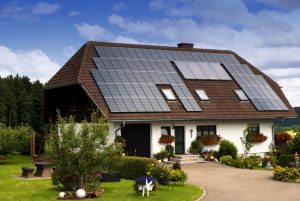Not many people pay attention to the surfaces they walk, run, or drive on. But if you purpose to notice, you’ll see that they’re all different and, with a little more observation, you’ll see that some roads are better than others.
According to the National Asphalt Pavement Association (NAPA), the U.S. has 2.7 million miles of paved roads. That’s more than 75 percent of the total 4 million miles of road that covers the country. Of this 2.7 million miles, 94 percent of roads are paved with asphalt.
Commercial and residential roads and driveways are finished with either concrete or asphalt. While both materials are cost-effective, there are more benefits to using asphalt.
Safety
With asphalt-paved roads, you have one of the smoothest surfaces for driving. Unlike rough roads that wear out tires and other mechanical parts, smoother pavements provide the best tire contact, making driving safer with the added traction.
Open-graded asphalt, a special type of road surface, minimizes splash and spray from tires coming into contact with water during rainstorms. This means that effective asphalt paving in Utah can reduce the probability of road crash and fatality during rainy days.
Asphalt is also generally black. This color helps retain more of the sun’s heat, meaning snow melts faster on an asphalt driveway than on a concrete one, providing more safety on snow-slicked roads.
Energy Efficiency
One of the major contributors to greenhouse gases is vehicle emissions. To reduce emission, vehicles should also reduce their fuel consumption. Fortunately, several studies have proven that vehicles consume less fuel on smooth roads, which can be achieved with asphalt paving.
Asphalt-paved roads make for an easier and smoother drive, which, in turn, leads to a more efficient flow of vehicular traffic. This answers one of the most critical problems on some American roadways: congestion. With less road congestion, there would also be less air pollution.
Low Maintenance
First off, concrete costs about 50 percent more than asphalt, according to Costhelper.com. What’s more, concrete is more susceptible to cracking. Concrete resurfacing is not a suitable option, either, so you’ll likely need to remove the existing surface to ensure that new concrete will adhere.
On the other hand, asphalt is less prone to cracking, even in winter. Asphalt’s surface isn’t as rigid as concrete, so it can expand and contract depending on the weather. In the event that your asphalt driveway cracks, it can be easily repaired with hot rubber crack filler.
Environment-Friendly

Asphalt is among the most recycled construction and demolition materials in the U.S. According to the Environmental Protection Agency, milling deteriorated asphalt to turn it into other asphalt products, such as pavement and shingles, saves the U.S. $18 billion a year.
Asphalt, being a petroleum-based material, can take up a lot of space in landfills. Worse, it will not biodegrade. By mixing reclaimed asphalt paving (RAP) with new or virgin asphalt, you have a resulting product that’s stronger than one made from entirely new materials.
Recycled asphalt mixed with new materials also reduces the need for mined aggregate. Since mining is water-intensive, tough on the land, and produces carbon emissions, the reduced demand for mined aggregate through asphalt recycling greatly contributes to sustainability.
If you’re looking to pave or replace your driveway, these benefits of using asphalt should be enough to sway you. Not only will you make your life safer and easier, but you’ll also be helping the environment.






